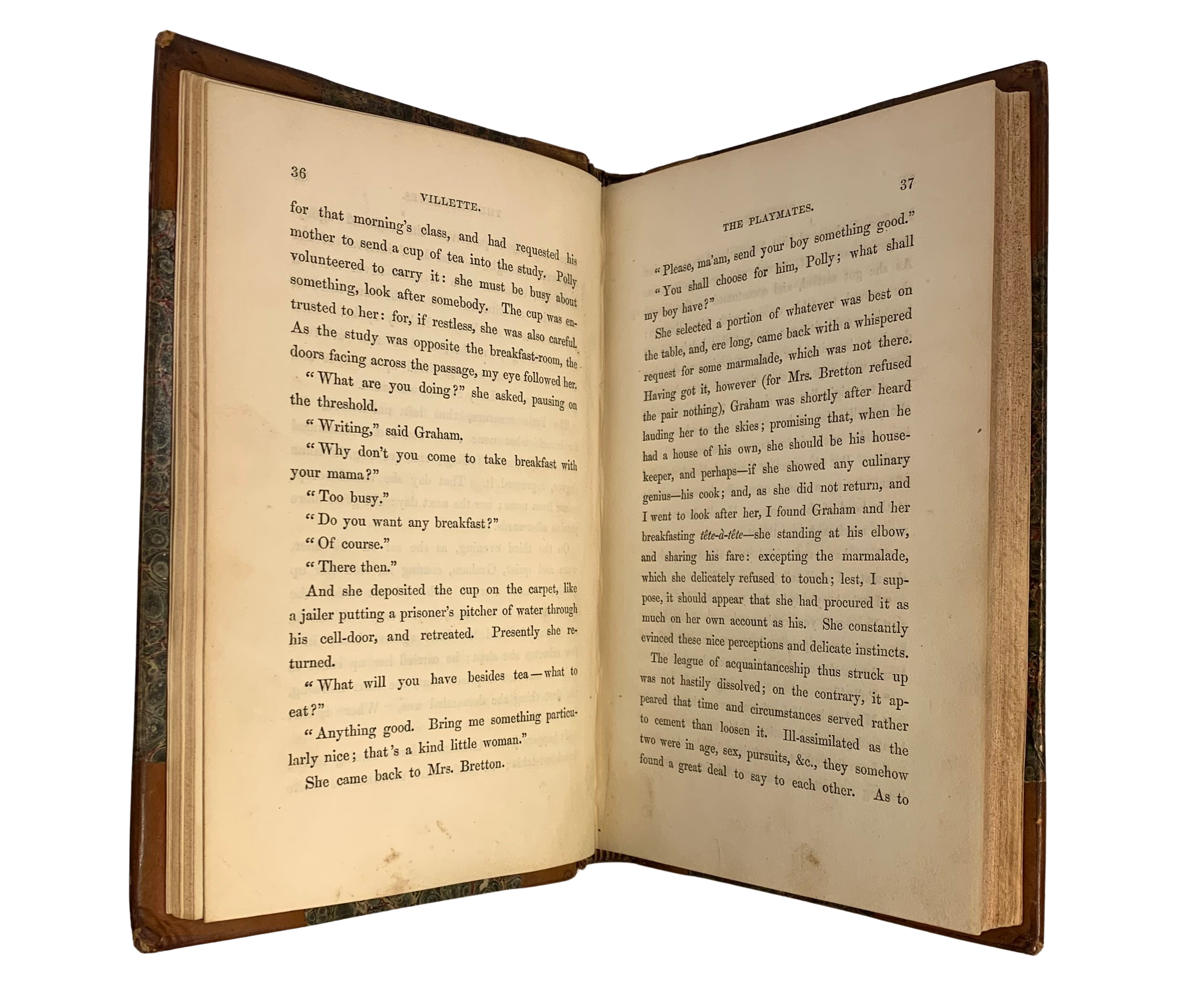Villette by Currer Bell




Villette by Currer Bell
First edition, bound without the half titles (as is common). Possibly later issue, lacking the publisher’s twelve-page catalogue to the rear of each volume, but might have been bound without.
This copy was presented to The Cambridge Training College Library, an institution formed to qualify educated women as teachers, by a Mrs Volpy, who we suggest understood that the novel’s subject matter made it a perfect and special donation to the college. A lovely copy imbued with the resonance of its provenance.
Charlotte Brontë began writing Villette in the 1840s, after travelling to Brussels with her sister Emily. There, the sisters taught Music and English, respectively, at a boarding school run by Mr and Mrs Hégers, a trip which was cut short after their aunt passed away suddenly at the end of 1842. The following year, she returned to the school, but her second stay was an unhappy one, and she began to form a close relationship with Constantin Héger, developing an unrequited love which bordered on obsession. In letters later published by Elizabeth Gaskell, the extent of Brontë’s feelings for the older, married man was revealed. Constantain had reportedly torn their correspondence into multiple pieces, but his wife had later retrieved them from the waste paper basket and had sewn them back together, in the hope that should they be made public, they could avoid scandal by showing the feelings to be entirely one-sided. “ I will not resign myself to the total loss of my master’s friendship” Brontë writes in one, “I would rather undergo the greatest bodily pains that have my heart constantly lacerated by searing regrets.” “Your last letter has sustained me”, she writes in another, “I await a letter and day after day disappointment flings me down again into overwhelming misery, when the sweet delight of seeing your writing and reading your counsel flees from me like an empty vision – then I am in a fever.”
It was Brontë’s experiences while at the school which would later go into forming The Professor. After being rejected by several publishers, she reworked the material and succeeded in publishing Villette, with many citing Hégers as the inspiration for the character of M. Paul Emanuel, the love interest of the protagonist Lucy Snowe. The Professor was later published posthumously, in its original form, in 1857.
“I thought I loved him when he went away; I love him now in another degree: he is more my own. [ . . . ] Oh! a thousand weepers, praying in agony on waiting shores, listened for that voice, but it was not uttered--not uttered till; when the hush came, some could not feel it: till, when the sun returned, his light was night to some!”
8vo., 3 vols; contemporary half brown calf over marbled paper boards; ruled in blind; spine ruled and numbered in gilt direct, with devices gilt in compartments and contrasting green leather label gilt; red speckled edges and orange paper endleaves; pp. [vii], 2-234, [ii]; [vii], 2-319, [iii]; [vii]; very good copies all, the boards a little scuffed along spines and at corners, some patches of darkening at head and foot, the latter perhaps caused by a sticker or emblem being removed; title page just beginning to split along gutter of Vol. II; upper edges a little dust soiled; pencil markings to ffeps; shelf mark in ink crossed through in pencil to ffeps; text block lightly and evenly toned, one or two lightly folded corners and the odd spot, very clean otherwise.
Provenance: Purple library stamp of Cambridge Training College Library (later Hughes Hall, Cambridge), along with presentation inscription ‘Presented by Mrs Valpy Oct. 1916’ to free front endpapers.
